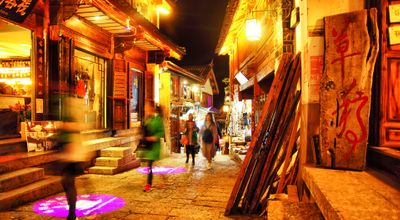Baisha village is 8kms from Lijiang and 4kms from Shuhe (another scenic ancient town). Bus no.6 comes here on a daily schedule and costs under RMB5 per person. There is no entry fee for this town although there are admission fares for some attractions, like the Dabaoji Palace with a charge of RMB30 and half off for students. The village is open at all times, but the palace operates from 08:00 to 18:00. There are very little people who speak English and even lesser signage that will help guide you, so come prepared accordingly, maybe consider hiring a local guide. And make sure to bring cash as ATMs are hard to come by in small towns. Eateries and cafes are available, some even offering western food. Hostels have sprung up as well across town in case you end up spending the night.
Tourists compare the different villages for their authenticity vs commercialization, but each place should be appreciated for what it is. Baisha (or White Sands) village is smaller then both Lijiang and Shuhe but because it is the birthplace of the Mu family, rulers of Naxi Kingdom, it has special value and some interesting buildings, setting it apart from both towns. It is offset by the Jade Dragon Snow Mountain in the rear. The aforementioned Dabaoji Palace is a temple that houses an old treasure of murals that incorporates work of Naxi, Han and Tibetan artists in the theme of religion. They are a good preservation of the trends and culture of that time. Fuguo Temple is another spot where you can glean a little bit of history. The Embroidery School of the Mu Family is another interesting place to visit as they have antique work displayed for visitors and you get to see younger people being taught the skill and crafting their own brilliant work. Buying a unique piece would make for a lovely souvenir and support the local artisans. Plus it is quite different from embroidery art in other parts of China.
Strolling around Baisha, you will come across many local Naxi’s going about their everyday life while greeting you with gracious and warm smiles. Some even have hand-made tie and dye work strung out in their courtyards for drying and/or sale. Don’t forget to visit the famous Dr. He, an internationally acclaimed Chinese medicine man with expertise in mountain herbs. But above all, just enjoy the peace that comes from being in such a tranquil place and really acclimatize to the relaxing atmosphere.

